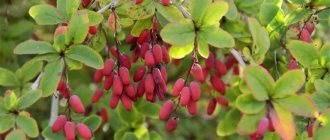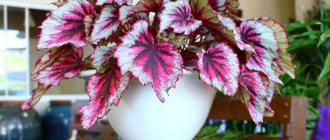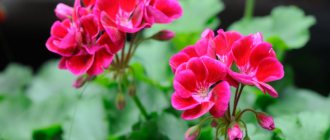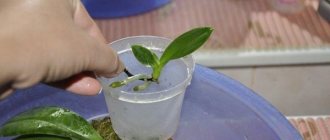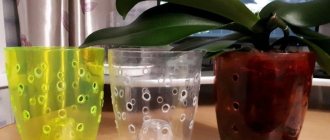Chlorophytum is a life-loving plant. There are usually no problems with its reproduction. The flower itself strives to raise as many children as possible and continue its existence in the form of new, young indoor plants. Both experienced and novice gardeners will be happy with its layering, because chlorophytum is not only very beautiful, but also extremely unpretentious. It is no coincidence that he was so popular in the USSR.
It seemed that there was not a single apartment, not a single institution where this herbaceous plant with beautiful narrow leaves did not grow. And all because it takes root easily and grows without causing any trouble.
Rules for propagating chlorophytum at home
Whatever method you choose to propagate this plant, there are basic rules that should not be ignored:
- choose a strong, healthy bush (so that the kids are healthy too);
- if you want to germinate seeds, choose the largest seed pods;
- prepare in advance everything you need for work: tools, gloves, containers, soil;
- think about where you will place the shoots (the place should be comfortable in terms of humidity and temperature);
- if you do not plan to “expand the population,” then the children should be removed (they interfere with the development of an adult bush).
Peculiarity! Flowers are characterized by intensive growth. They can be considered adults a year after the cuttings are planted. Usually a bush grows in an apartment for about 10 years, after which it needs to be renewed.
Subsequent care of seedlings
After transplanting, indoor plants require additional care. The temperature in the room should not be too low (at least 10 degrees), but at the same time should not exceed 20 degrees. The flower loves natural light, so there is no need to place the plant in dark corners of the room.
As for watering, chlorophytum does not like moisture too much. Watering should be done moderately, focusing on dry soil. In the summer - about every other day, in winter - based on the temperature and humidity in the room. Provided the temperature remains the same as in summer - exactly the same. However, if the temperature has dropped, then the number of waterings is reduced to 2 per week. In addition, you must not forget to monitor the condition of the soil.
There is no need to touch the leaves of chlorophytum, as they are quite sensitive. In order to get rid of dust accumulated on the leaves, it will be enough to spray the plant at least once a month. Often you don't need to do this either. Many people have a question about trimming the mustache that appears on adult representatives of Chlorophytum. This should be done if you want the flower to have more leaves. In this case, they can be carefully trimmed.
Basic methods
Popular flower propagation methods:
- children;
- dividing the bush;
- seeds.
The simplest and most beloved method is with the help of children. But here, too, not everything is smooth; sometimes you have to resort to alternative methods.
Attention! There are varieties that simply do not produce side “whiskers” with rosettes. These are interesting, beautiful plants, but you have to work hard to propagate them. There are not many options: you must either resort to dividing the bush or grow seedlings from seeds.
Leaf rosettes
Leaf rosettes are one of the easiest ways to propagate a flower. Your actions:
- prepare the soil (universal will do) and a container for planting;
- separate the leaf rosette;
- root the planting material in the ground;
- water and place in a shaded place for a couple of weeks.
Seeds
Germinating seeds is a difficult task. They don't always come up. But there is always hope for luck. If you have a desire to try your hand at floriculture, then you can take a risk.
The algorithm of actions is as follows:
- collect the strongest and largest seed pods after flowering;
- prepare the germination medium: gauze or a layer of cotton wool;
- provide warmth and moisture;
- wait for the seeds to germinate (at least two leaves);
- prepare the soil (a mixture of peat, sand and leaf soil);
- plant the seeds in the prepared soil;
- cover the container with glass, ensuring high humidity;
- After a couple of days, spray with water.
Be prepared for the fact that not all of your seeds will germinate. If half of them sprout, this is already a good result.
Important! The container with future seedlings should be in a warm place. Drafts are excluded! Sun rays are also undesirable.
Air children
Air babies are a wonderful way of propagating chlorophytum, invented by nature itself. The plant periodically produces long “whiskers” reminiscent of strawberry ones. Small “babies” grow on them - tiny bushes. They have every opportunity for independent continuation of life and development. One has only to plant this miniature bush in the ground - and it will begin to grow, turning into an adult plant in a couple of months.
To grow a flower from a “baby” with 100% success, it is better not to immediately plant the “baby” in the ground, but first let it gain strength in the water.
What should be done:
- cut off the “baby” from the mother’s “antenna”;
- place in a container with water;
- wait for the roots to appear;
- transplant into the ground.
Attention! The best time for the procedure is February or March.
Dividing the bush
Reproduction by dividing the bush is quite simple. In this case, you will need maximum accuracy and caution when working with the root system. Try not to damage the delicate roots. Unravel them rather than tear them, so as not to lose the entire earthen lump. At the same time, don't worry if some small part of the roots die. It is important for you to remove old, dried out or rotten areas.
Your task:
- in the spring, plan the next transplant of chlorophytum with simultaneous reproduction;
- prepare pots and soil;
- a couple of days before transplanting, water thoroughly (your task is to make the soil as soft and pliable as possible);
- remove the plant from the ground, shake off the soil, remove damaged parts of the root system;
- divide the bush into 2-3 parts (it is advisable to untangle the roots);
- plant each part in the prepared container;
- water young plants.
Interesting! When propagating by dividing the bush, you can leave the old pot and plant one of the parts of the plant in it. After all, it will significantly decrease in volume. This means that a new, larger pot is no longer needed.
Features of care
The plant is extremely unpretentious. But in order for it to feel good and grow actively, you should follow simple rules.
Lighting
Partial shade is preferred. The optimal place to place the flower is the east or west side. If the windows face south, it is better to remove the pot from the windowsill so that the leaves do not burn in direct sunlight.
Humidity
This tropical plant loves high humidity of 40-90%, but also thrives in dry climates, although it grows more slowly. It is useful to regularly spray the bush with a spray bottle and wipe the leaves with a damp cloth to remove dust.
Temperature
Chlorophytum tolerates both heat and coolness well. It is advisable that the temperature in the room with the flower does not fall below + 10 C.
Watering
For these purposes, use settled water at room temperature. Water should be abundant so that the liquid saturates the entire soil and flows into the pan. The next watering is done when the surface of the soil dries out but remains slightly moist. It is important not to overwater the plant, otherwise the roots will rot and the leaves will become heavy and break.
It is better not to add chlorophytum than to overfill it. You should carefully monitor the well-being of the plant and maintain the humidity balance.
Top dressing
In the first 3-4 months after planting, fertilizing is not required. Then every couple of months you should fertilize the plant with a complex solution for indoor flowers.
Trimming
The bush needs sanitary pruning as needed. Damaged parts of the leaves are removed with sharp scissors or pruners. If the leaf is severely broken off or dried out, it is torn off close to the stem.
Pruning is done before the next watering, when the foliage is not too juicy. Peduncles are cut off at the base or internode after the babies are removed.
Chlorophytum used to be found in every apartment. Now he has become undeservedly forgotten. And completely in vain. This plant can decorate any interior; it looks simple and chic at the same time.
You can learn more about how to propagate chlorophytum and how to transplant it by watching the video:
leru.mir Thu 06/14/2018 — 00:44
Reproduction by layering is more practical, my mother’s friend once gave us the opportunity to propagate this plant in this form, since then we have been growing this flower and now there is more than one. Seeds have never been grown.
- Login or register to leave comments
Chlorophytum is truly an absolutely unpretentious plant, and propagating it is as easy as shelling pears. I like to plant it in hanging pots, then the foliage looks especially beautiful. But due to rapid growth, they have to be replanted often.
- Login or register to leave comments
The flower is beautiful, I love it. It grows in my kitchen, as it is a filter plant and purifies the air very well. You need to plant it in a spacious pot, as the root is very powerful.
- Login or register to leave comments
Ulia Tue 30.10.2018 - 08:30
I have always propagated it by layering, or by children in other words. It gives roots very quickly. Unpretentious. One problem - the cat loves to eat it. Therefore, I had to say goodbye to the plant.
- Login or register to leave comments
A very unpretentious plant. It is easily propagated by layering, you can put it in water, or you can dig it straight into the ground. An excellent option for landscaping office premises and children's institutions. A little boring for an apartment, in my opinion. At home I want more exotic plants.
Rooting a rosette in the ground and in water
Chlorophytum rosettes can be rooted both in the ground and in water. The choice of method depends on the size and health of the “baby”. For example, a grown, large rosette with developed aerial roots can be planted directly into the soil. If the rosette is not large, it is better to first let it grow by placing it in a container of water.
For rooting in the ground:
- prepare a small pot and loose soil;
- place drainage at the bottom;
- separate the large rosette from the mother stem (you can carefully unscrew it);
- place the shoot in a pot and plant;
- water and place temporarily in a shaded place.
If the rosette has very few roots, then they must be grown in water. Just cut off a small rosette and place it in a glass of water. It is advisable to place the shoot in such a way that it is not completely immersed in water. After roots appear, the plant can be planted in the ground.
When should you replant?
Chlorophytum at home can produce mustaches with “babies” at any time of the year. Therefore, you can start propagating the “babies” at a time when they are the largest, with the root system already emerging. But still, the plant takes root better and grows when transplanted in the fall or spring (in the off-season).
Basic Rules:
- Replanting is best done in autumn or spring;
- transplantation of “babies” is available at any time of the year;
- You should not propagate a plant that is too young; it is better to wait until it gains strength;
- for propagation by dividing the bush, it is better to take a flower older than three years;
- Children take from a flower older than one year.
Description of the plant
The perennial plant is a bush up to half a meter high. It has a short stem and developed long foliage. The strong rhizome is dotted with tubers that accumulate moisture.
The leaves are smooth. There are variegated and plain ones. The length is varied - from 15 cm to a meter. Chlorophytum blooms in spring or autumn. The buds form on long tendrils at nodes or cobs. The flowers are light and small, consisting of 6 petals.
After flowering, babies form on the tendrils. They are a rosette of leaves and roots. When pollinated, the fruit is set. It looks like a dry box with three compartments inside.
In total there are about 200 species of chlorophytum. The following varieties have become popular in our country.
Crested
Has linear leaves. They are long and narrow, symmetrically located. Arrows with flowers and children form among the spreading foliage.
Winged
The second name is Orange. Its leaves are oval and wide. They are dark green in color with an orange petiole and midrib.
The inflorescences of the plant are spike-shaped. Reproduces mainly by seeds.
Curly
He's Bonnie. The leaves of the variety are long with a light center.
They twist into a spiral, wrapping around the stem and pot. Like the Crested, Bonnie forms long arrows with the babies.
Cape
The lanceolate leaves of the variety reach 1 meter in length. The width is approximately 3 cm. It does not have long whiskers.
Flowers are formed on short stems. Reproduction is mainly by dividing the bush.
Which pot to choose and how to prepare the soil?
Chlorophytum will grow well in both plastic and ceramic pots. The main thing is that there is a drain hole.
Soil requirements:
- it must conduct moisture efficiently;
- it should be light and conduct air well;
- contain nutrients.
Typically the soil is a mixture of sand, humus and deciduous soil.
